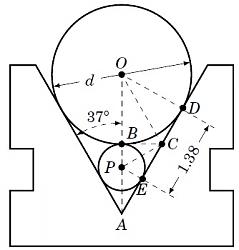I was suggesting that once X is defined by someone, not me, its definition could be used to deduce, via geometry, the largest diameter that would be consistent with that value of X.
I'm not proposing that what I wrote is the correct (or only) way to specify cylinder size for a V block, just that it's a possible one.


 LinkBack URL
LinkBack URL About LinkBacks
About LinkBacks


 Reply With Quote
Reply With Quote



Bookmarks